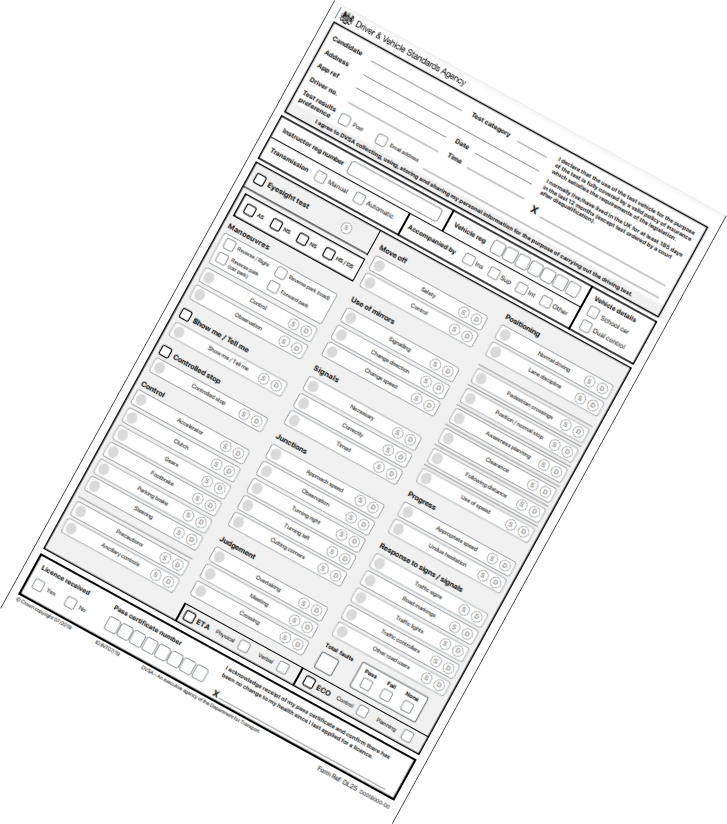
How are driving tests marked?
Myths and rumours abound about how driving tests are assessed. Having a clearer picture of the real process should help give you confidence that you understand what is required when you are approaching your test date.
The basic principle is that the whole drive is continuously assessed, looking at any moments where your driving deviates from the ideal. When this happens the examiner analyses the fault based on the level of risk it has caused and the impact on others and grades it accordingly.
Faults are marked in a number of broad categories such as Control, Junctions, Positioning. Within these categories are individual faults, in the case of Junctions for example these are Approach speed, Observation, Turning right, Turning left and Cutting corners. You can see the up to date version of the test report form online, although the examiner will actually do the marking on a tablet.